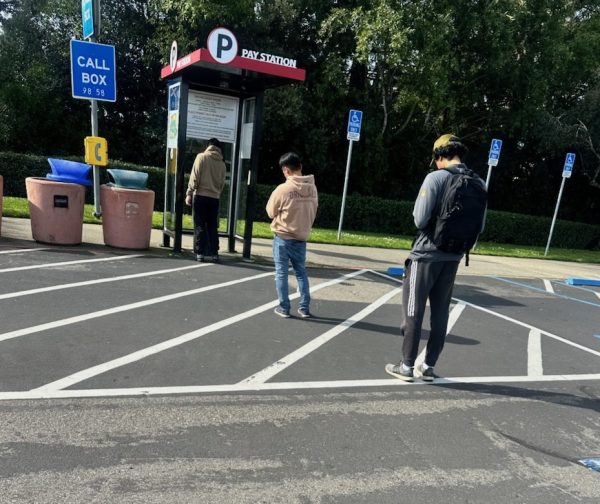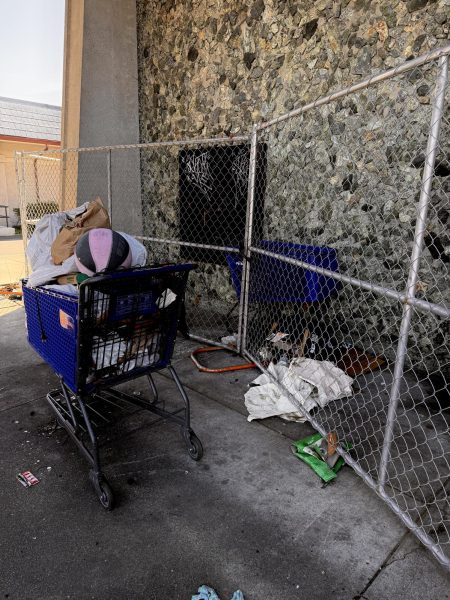State audit raises concerns about CSU hiring practices
The 23-campus Cal State University system will revise some of its management policies following a state audit that discovered discrepancies in hiring and budgetary practices last month.
On April 20, the California Bureau of State Audits released the results of an audit that looked at six CSU campuses, which included Fullerton, Los Angeles, San Diego, San Francisco, Cal Poly San Luis Obispo and Sonoma, from the fiscal years of 2007-2008 through 2015-2016. Cal State East Bay was not included in the audit and President Leroy M. Morishita did not respond to the Pioneer’s inquiries into East Bay’s hiring and budgetary practices at the time of publication.
Hiring practices in question
Over a nine-year period, several campuses in the CSU system hired more management personnel than other campus staff and faculty members. The number of hires was disproportionate to the number of students, and CSU administration failed to provide written justification for the hirings, according to the audit report titled, “Stronger Oversight Is Needed for Hiring and Compensating Management Personnel and for Monitoring Campus Budgets.”
The California State University Employees Union (CSUEU), a union that represents over 16,000 staff members on CSU campuses statewide, developed the idea for the audit, according to Pat Gantt, CSUEU president. The CSUEU advocates for CSU employees by bargaining contracts and protecting wages, hours and working conditions, according to Gantt.
Assemblywoman Shirley Weber, a Democrat from San Diego, requested the state conduct the audit last May, according to CSUEU website. State audits typically take up to nine months to complete.
“We looked at patterns and saw we didn’t have policies or descriptions of positions or justifications, we just saw raw numbers that appeared to be growing faster than other groups,” said Gantt. “There was no common policy or program on how managers were hired or compensated.”
“The CSU maintains detailed system- and campus-level policies and procedures for the hiring of employees, and complies with state and federal laws,” CSU Manager of Public Affairs Elizabeth Chapin told the Pioneer. “These policies and procedures are evaluated regularly to ensure compliance and the implementation of best practices.”
Gantt explained that the audit looked at the hiring, spending and documentation practices of the CSU to try to identify waste, fraud and abuse. While they didn’t find fraud or abuse, the audit raised questions about the need for the number of management personnel that were hired.
Who are “management personnel”?
According to the audit, the CSU system employs several different types of employees: management personnel, which includes administrators, deans and supervisors; faculty, which includes professors, lecturers and athletic coaches; and other employees, such as parking officials and student employees.
From the fiscal years of 2007-2008 to 2015-2016, the number of management personnel grew by 15 percent, from 3,447 to 3,950. In comparison, faculty grew seven percent from 20,081 to 21,409 and staff six percent from 25,343 to 26,857. The total number of CSU employees grew 6.8 percent or 3,347.
State auditors interviewed staff members in the Chancellor’s Office and other positions involved in hiring practices and found that while the campuses justified the purpose behind their hiring practices, they failed to produce written analyses that supported the need for the amount of management hired.
According to Gantt, management personnel typically manage people, money and in some cases policy. Gantt said excessive increases in management personnel could create large bureaucratic structures. “Universities are bureaucracies in themselves but the difference is these are state universities and they get some donations, but the majority of income is from taxpayers, through state budget or through students and tuition,” he said.
In addition, the campuses granted raises to management personnel without providing reviews that justified these increases. For example, Cal Poly San Luis Obispo gave raises to 70 management personnel positions in 2016, which totalled $175,000 annually, with no updated performance evaluations on file, according to the audit.
Twenty-one out of 30 campus presidents who served in the CSU system during the nine-year audit period received six percent raises, while five received raises of 16 percent or more. All raises complied with CSU Board of Trustees policy.
Over nine years, the Chancellor position’s base pay decreased by five percent from $421,500 to $400,746 and Cal State East Bay’s President’s base pay increased 16 percent, from $276,055 to $319,025. CSU Chancellor Timothy P. White was appointed to his role in 2013 and East Bay’s President Leroy M. Morishita to his position in 2012.
Issues with budget management
The audit also found that only two of the campuses, San Francisco and Los Angeles, kept written records of their budget review process; none had written policies that detailed budget or employee review practices and all claimed to track budgets informally.
According to the audit, campuses without written budget monitoring policies can cause doubts about their appropriate and efficient use of state funding and are at a larger risk for overspending their budgets. The audit found that none of the campuses overspent their budgets.
The state budget provided the CSU with a $216.5 million increase in fiscal year 2015-2016 to increase enrollment by 10,400, hire full-time faculty and improve graduation rates. While the CSU reportedly increased enrollment by 13,000 and hired 700 new faculty members, it wasn’t required to specify how state funds were used to benefit students, according to the audit.
In an effort to hold the CSU accountable for its use of state funds, in fiscal year 2016-2017, the state granted the CSU $35 million as a one-time fund to improve graduation rates, on the condition that it create a plan that details a time frame for the state-established graduation goals and the actions the CSU will take to meet them, according to the audit.
An efficient use of resources?
Gantt said the audit raised questions about whether the CSU system is using its resources and funding as efficiently as possible within the current management structure.
“If all the students were getting into CSU, getting the classes they want and graduating four years, it would be an efficient management system, but they’re not,” said Gantt.
On March 22, the CSU Board of Trustees approved a $270 tuition increase for resident undergraduate students in Fall 2017, the first increase in six years, according to a CSU press release. The raise will generate $77.5 million, to be used for Graduation Initiative 2025, which aims to graduate 500,000 students over the next decade, according to the CSU.
The CSU is the largest four-year public university system in the country with 474,600 students and 49,000 faculty and staff members, according to the audit. Campus presidents are responsible for managing their own campus’ finances, hiring practices and reporting systems.
“So much of the CSU authority has been transferred to the campuses and they tend to do what they want,” said Gantt. “That’s why you end up with different issues around number of managers, different graduation rates and enrollment patterns. The system isn’t really acting like a system, but it should.”
CSU will comply with state recommendations
Audit recommendations for the Chancellor included the development of a policy that requires written justification for management personnel based on a workload staffing analysis, as well as the implementation of employee evaluations.
In regard to budget management, the audit recommended that the CSU submit an annual report detailing which actions it took to meet the state’s goals for student success.
Chapin confirmed that the CSU will work with the State Auditor to implement the recommendations in “a timely manner.” According to Chapin, there is no set timeline at the moment.











